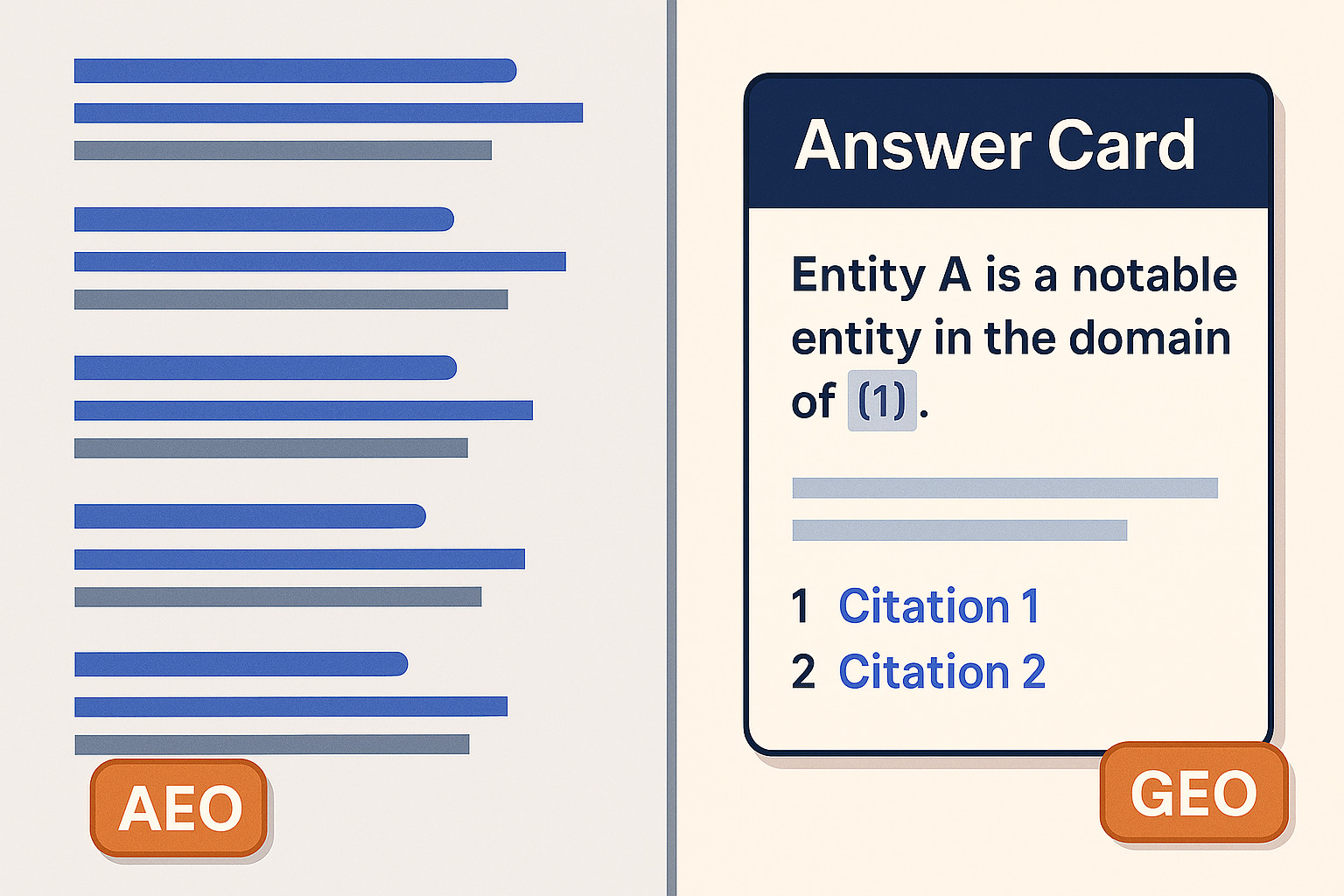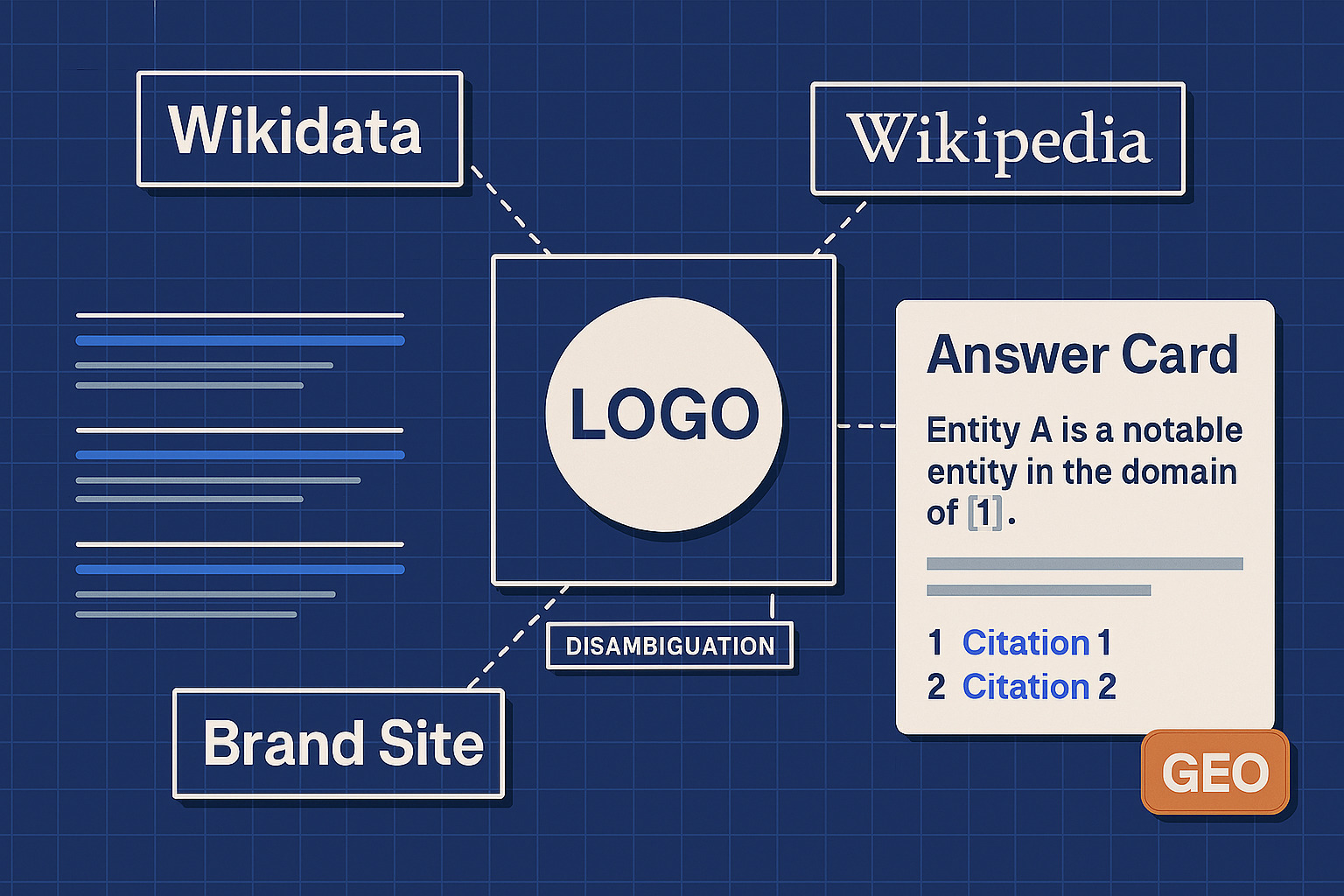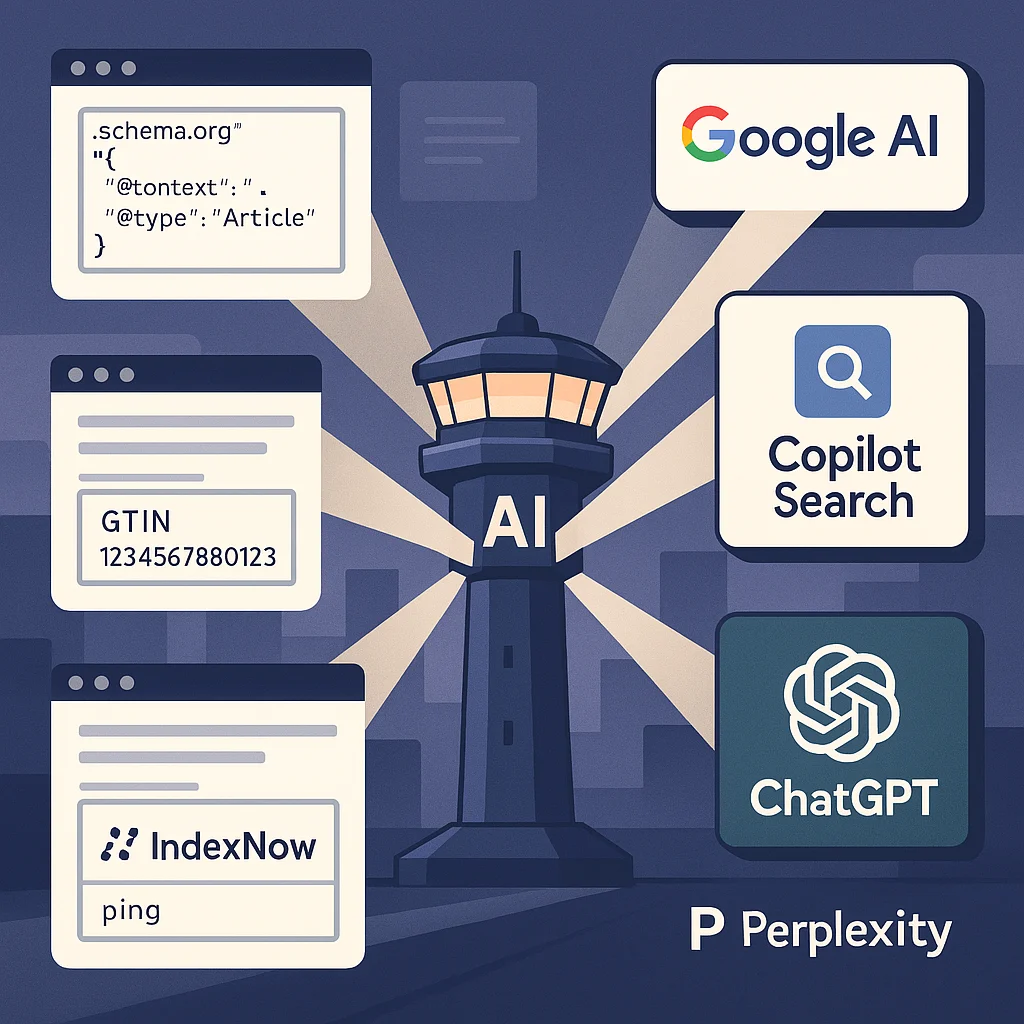Before optimizing, let’s align on language. AEO makes your page the best direct answer that chatbots can safely quote. GEO is broader: a research‑backed approach that increases your probability of being selected and attributed in generative responses, by structuring passages, adding statistics, and citing authoritative sources. In practice, visibility means three milestones: (1) being ingested, (2) being selected, and (3) being attributed with a clickable citation. (Keywords: AEO, GEO, citation, attribution.)
If I ask a bot, “Who are you and what do you sell?”, can it resolve a single, unambiguous entity? This section ensures engines tie your brand to the right facts in the Knowledge Graph.
Get the Latest Article Updates via WhatsApp
Thank you! You will receive article updates via WhatsApp.
An error occurred. Please try again.
- Map canonical data with Organization schema (JSON‑LD): name, legal name, logo, contact, founding date, and “ links to authoritative profiles (Wikidata, Wikipedia, LinkedIn). (Keywords: entity SEO, schema markup,
sameAs.)
- Create/clean public references: Align your site facts with Wikidata and use
sameAs to connect them; consistency reduces ambiguity across graphs. (Keywords: Wikidata, Knowledge Graph.)
- Show E‑E‑A‑T on author and company pages: bylines, bios, credentials, editorial standards, and a clear updates log, these are trust signals engines and users notice. (Keywords: E‑E‑A‑T, author credibility.)
Step 2, Make your site machine‑readable (schema engines can trust)
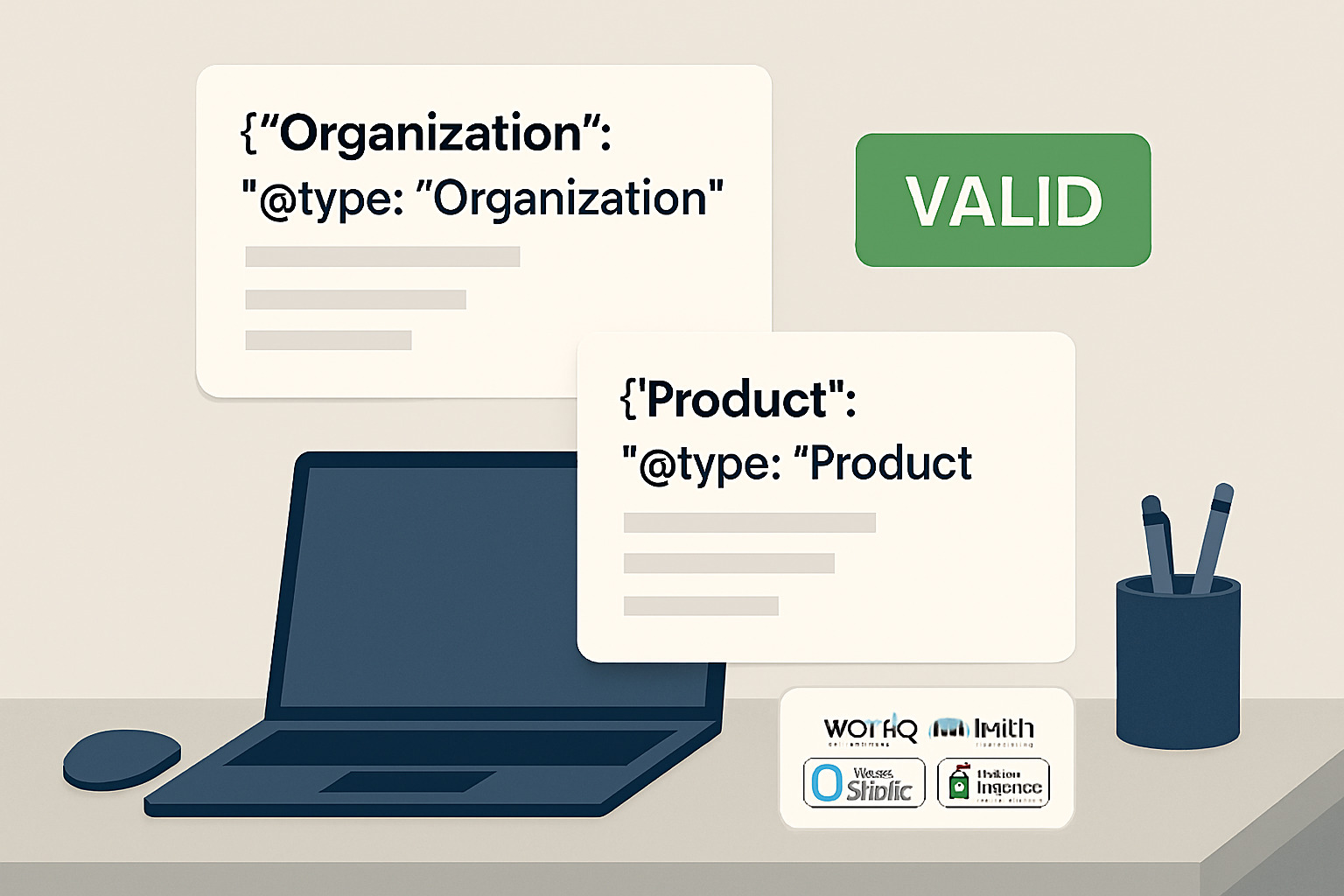
Machine-readable schema increases trust in extracted facts. Image create with Microsoft Copilot.
Generative engines extract facts and relationships. You’ll get more dependable visibility when your data is structured for parsers and shopping graphs.
- Use JSON‑LD for Organization, Product, Article, HowTo/Recipe/LocalBusiness as relevant, and validate regularly. (Keywords: schema markup, structured data.)
- For commerce, pair Product/Offer schema with Google Merchant Center feeds to extend eligibility across Search/Shopping/Maps/YouTube, critical when AI Overviews/AI Mode blend attributes like price and availability. (Keywords: Merchant Center, AI Overviews.)
- Keep expectations realistic for FAQPage markup: FAQ rich results are limited mostly to well‑known government/health sites. Keep FAQs for users, not for SERP glitter. (Keywords: FAQ rich results.)
Organization snippet template
sameAs``json { "@context": "https://schema.org", "@type": "Organization", "@id": "https://www.example.com/#org", "name": "Example Brand", "url": "https://www.example.com/", "logo": "https://www.example.com/logo.svg", "sameAs": [ "https://www.wikidata.org/wiki/QXXXXXX", "https://en.wikipedia.org/wiki/Example_Brand", "https://www.linkedin.com/company/example" ], "foundingDate": "2014-06-01" } sameAs``
Step 3, Publish “answerable” content patterns (chunks, passages, definitions)
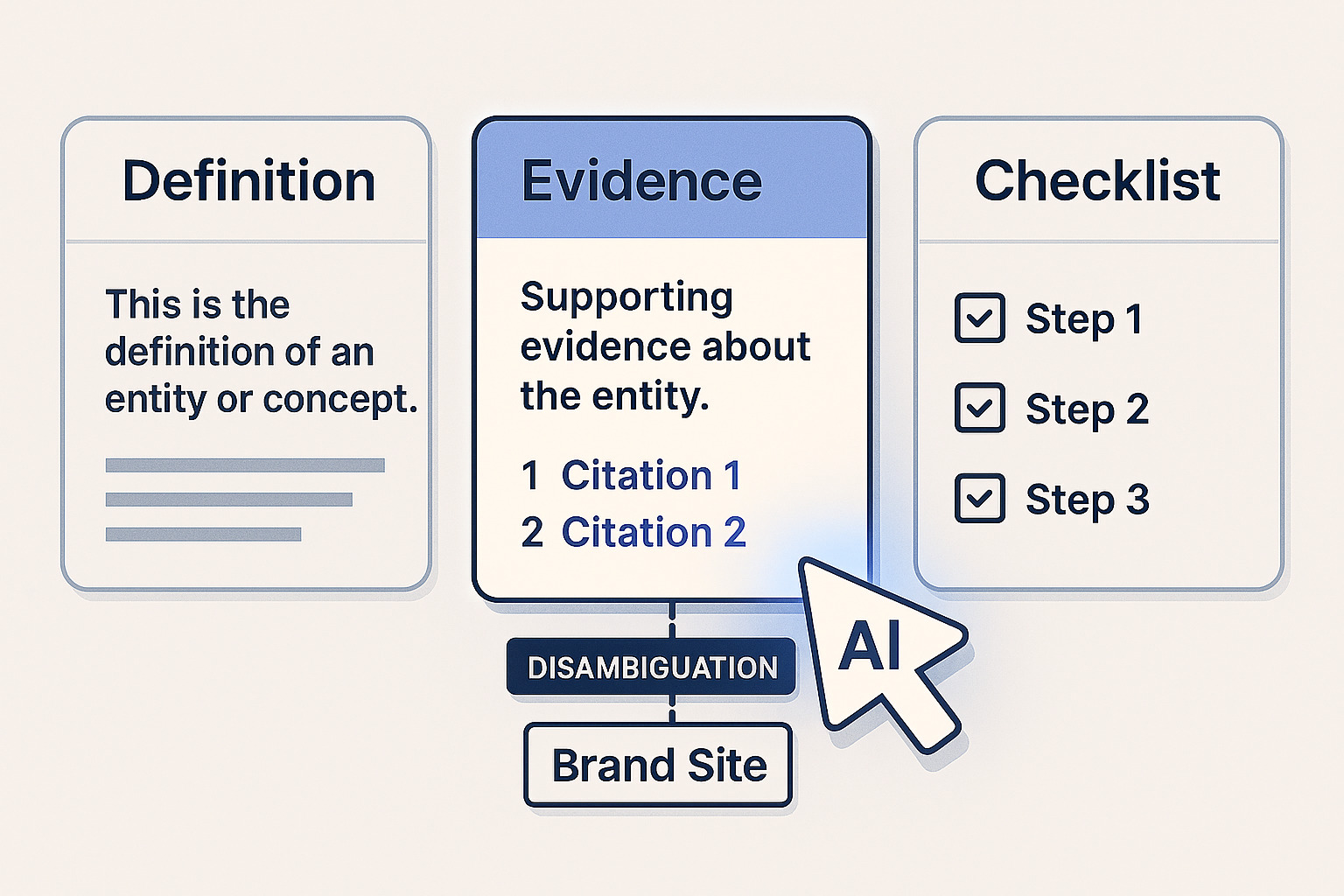
Micro-answers create safe, quotable passages for answer engines. Image create with Microsoft Copilot.
Models cite precise, self‑contained passages more often than long, meandering paragraphs. Design each key section to be copy‑safe and attribution‑friendly.
- Start with a two‑sentence definition (what/why). (Keywords: AEO definition.)
- Add evidence: standards, official docs, or peer‑reviewed/publisher‑grade sources. (Keywords: citation, authority.)
- Close with actionable steps in a short checklist. (Keywords: micro‑answers.)
- Keep headings descriptive and ensure every paragraph contains a relevant keyword naturally (entity SEO, schema markup, AI Overviews), without stuffing.
Step 4, Feed real‑time data (so engines prefer you over aggregators)
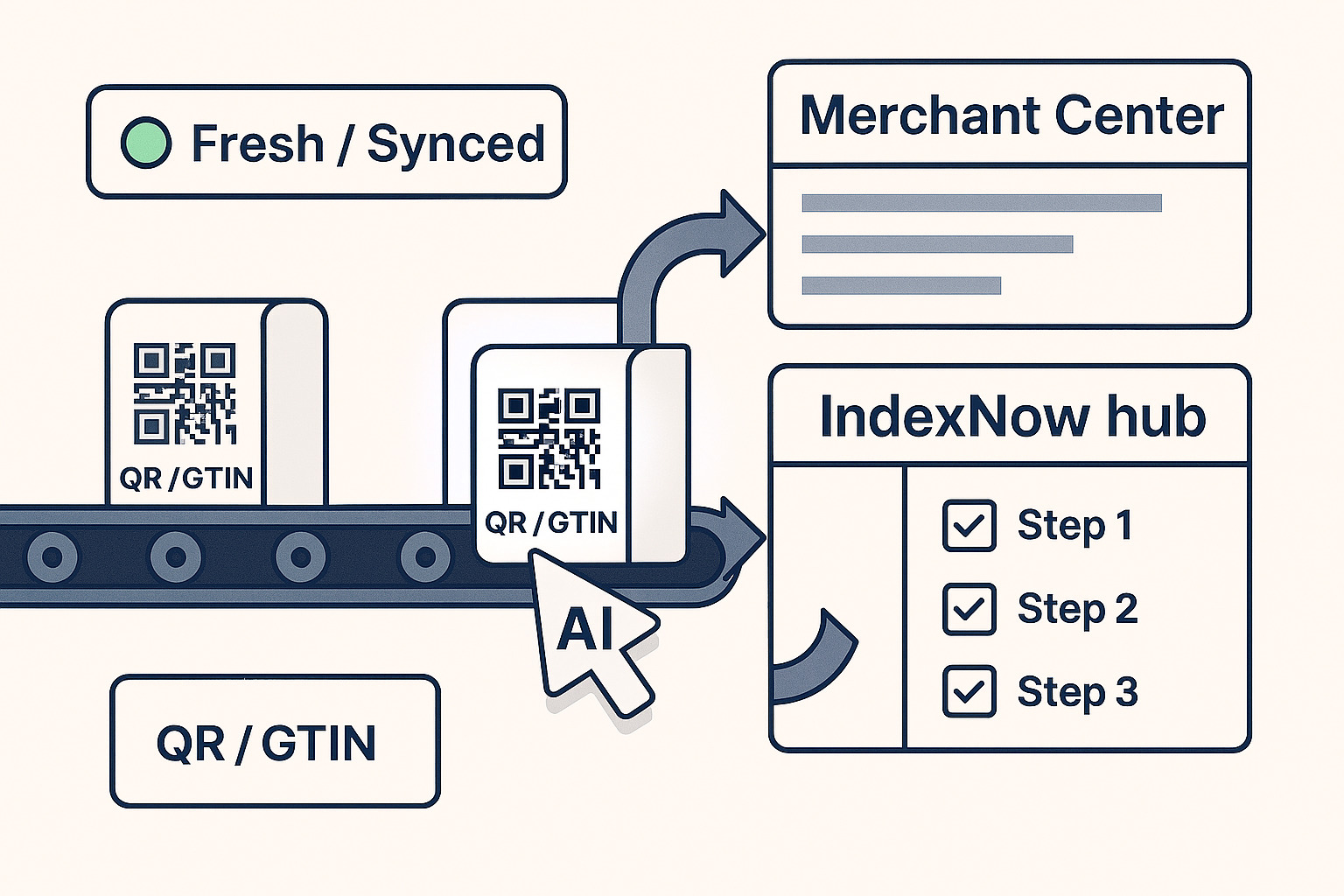
Fresh, standardized data helps engines prefer your canonical source. Image create with Microsoft Copilot.
Fresh, trustworthy product data makes your site a safer source for AI summaries than third‑party aggregators.
- Merchant Center + GTINs: Provide complete feeds with valid GTINs (per GS1). Correct identifiers improve matching and eligibility across surfaces. (Keywords: GTIN, GS1.)
- GS1 Digital Link (2025): Connect physical products to canonical web data via resolvable QR/URLs to align packaging, PDPs, and knowledge graphs. (Keywords: GS1 Digital Link.)
- IndexNow: Push URL updates for near‑real‑time discovery across participating engines. Wire it into your publish/update pipelines. (Keywords: IndexNow, freshness.)
Product snippet starter (with GTIN & offers)
sameAs``json { "@context": "https://schema.org", "@type": "Product", "name": "Example Pro 2", "sku": "EP2-256", "gtin13": "4006381333931", "brand": { "@type": "Brand", "name": "Example" }, "offers": { "@type": "Offer", "priceCurrency": "USD", "price": "299.00", "availability": "https://schema.org/InStock" } } sameAs``
Step 5, Earn and signal provenance (citations, bylines, policies)
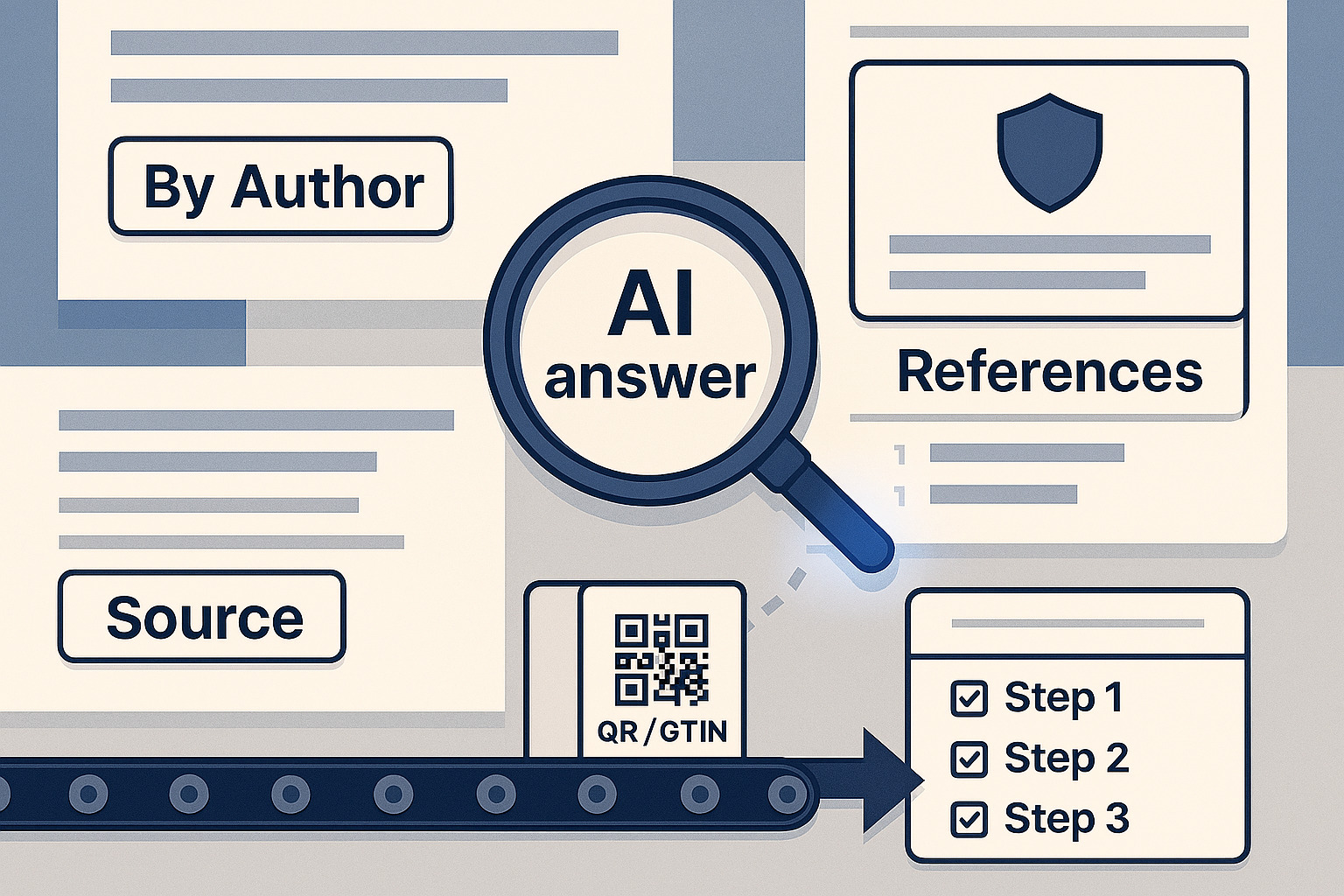
Clear provenance and policies increase eligibility for attribution. Image create with Microsoft Copilot.
Attribution isn’t an accident; it’s a design choice. Make it easy for engines and people to trust and cite you.
- Add clear citations inside articles; Copilot, ChatGPT Search, and Perplexity all surface sources prominently. (Keywords: provenance, citations.)
- Surface authors’ credentials, editorial policies, and change logs to support E‑E‑A‑T. (Keywords: E‑E‑A‑T.)
- Comply with Google spam policies (site‑reputation abuse, scaled content abuse) and helpful‑content guidance to avoid de‑weighting in AI experiences. (Keywords: spam policies, helpful content.)
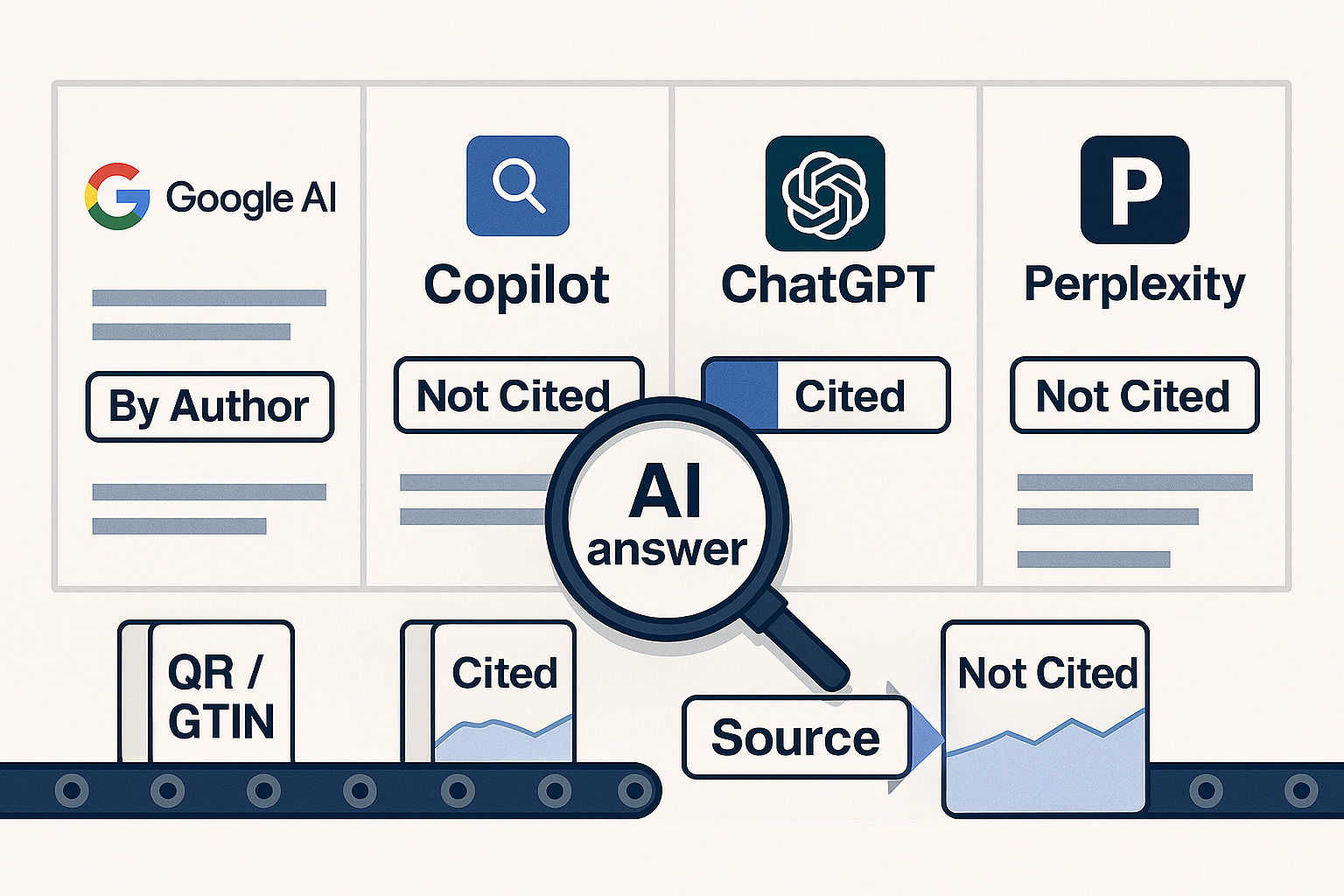
Measure citations weekly and iterate at the passage level. Image create with Microsoft Copilot.
Measurement closes the loop and turns hunches into decisions. Keep it lightweight but consistent.
- Platform checks (weekly): Prompt Google AI Mode/Overviews, Copilot Search, ChatGPT Search, and Perplexity for your priority queries; log whether you’re cited, which URL, and the exact passage. (Keywords: measurement, AI citations.)
- Search Console: Watch Merchant/Product reporting and branded/entity query trends that correlate with AI features. (Keywords: Search Console.)
- Feed health: Track GTIN validation errors, price/availability freshness, and supplemental attributes; fix quickly to keep summaries accurate. (Keywords: GTIN, feed health.)
Risk, compliance & crawler controls (be findable, and protect your content)

Balance discoverability with training controls and firewall rules. Image create with Microsoft Copilot.
You may want discovery without allowing AI training. Understand the trade‑offs and the levers you control.
- robots.txt lets you manage crawler access; reputable crawlers respect it, but some bots may not, use CDN/firewall rules if policy is critical. (Keywords: robots.txt, crawler controls.)
- To opt out of model training, consider blocking GPTBot and Google‑Extended while allowing Googlebot for Search. (Keywords: GPTBot, Google‑Extended.)
Training‑opt‑out example (review with legal/compliance first)
`sameAs“
User-agent: GPTBot
Disallow: /
User-agent: Google-Extended
Disallow: /
`sameAs“
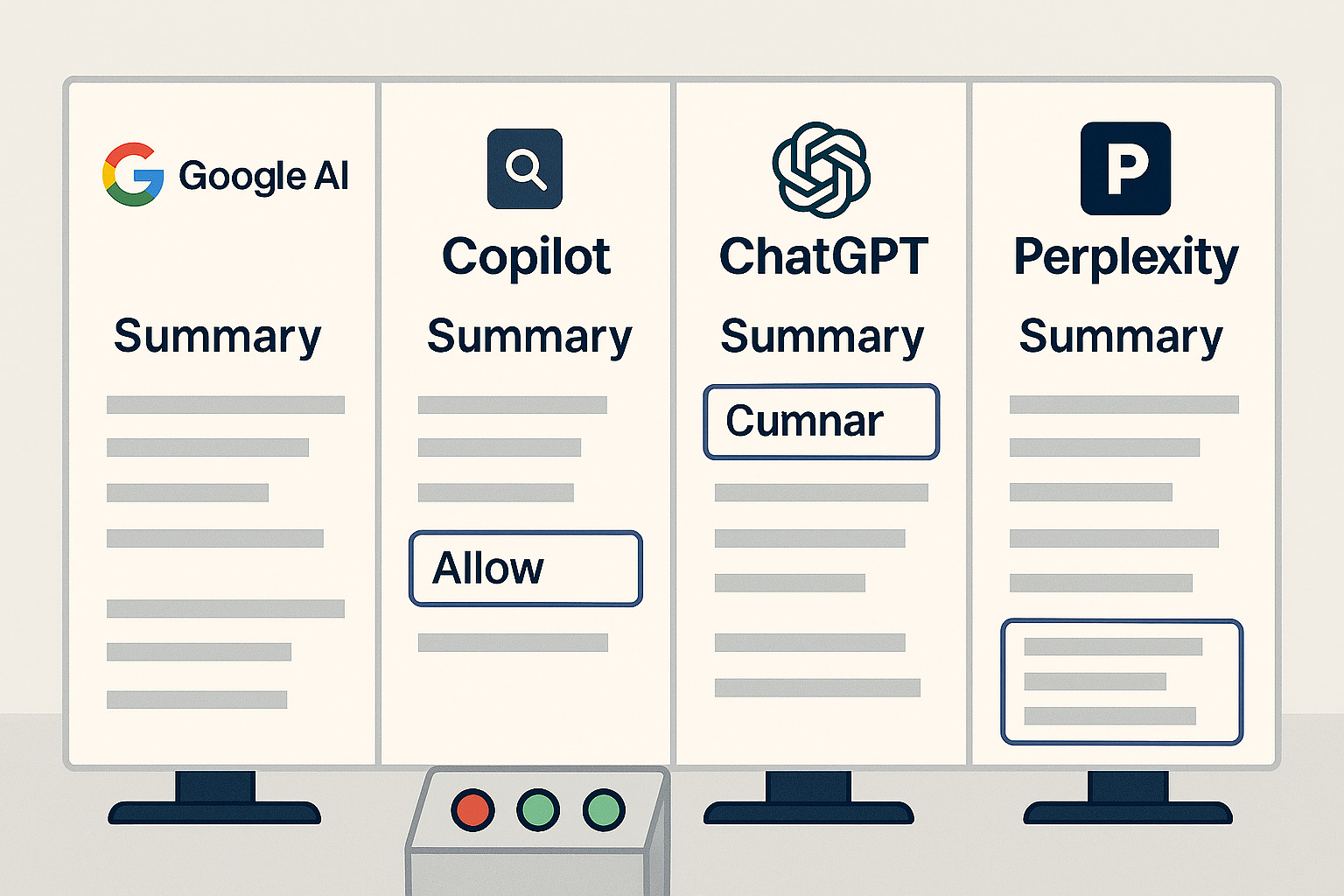
Tailor tactics to each engine’s sourcing and citation behavior. Image create with Microsoft Copilot.
Each engine has its own sourcing and citation UX. Tune your AEO/GEO tactics accordingly.
Google AI Overviews / AI Mode
Open with tight, evidence‑backed passages and robust Product/Offer data; align with “helpful, reliable, people‑first” content principles. (Keywords: AI Overviews, helpful content.)
Bing Copilot Search
Implement IndexNow and embed on‑page citations; Copilot prominently surfaces sources and link lists. (Keywords: Copilot Search, IndexNow.)
ChatGPT Search
Keep Wikipedia/Wikidata consistent with your Organization schema; ChatGPT shows inline sources and rewards clear explainer pages. (Keywords: ChatGPT Search, entity SEO.)
Perplexity
Expect citations by default; concise, well‑sourced answers with community‑relevant references perform best. (Keywords: Perplexity, citations.)
Case study, TikTok Shop D2C skincare (2025 playbook)
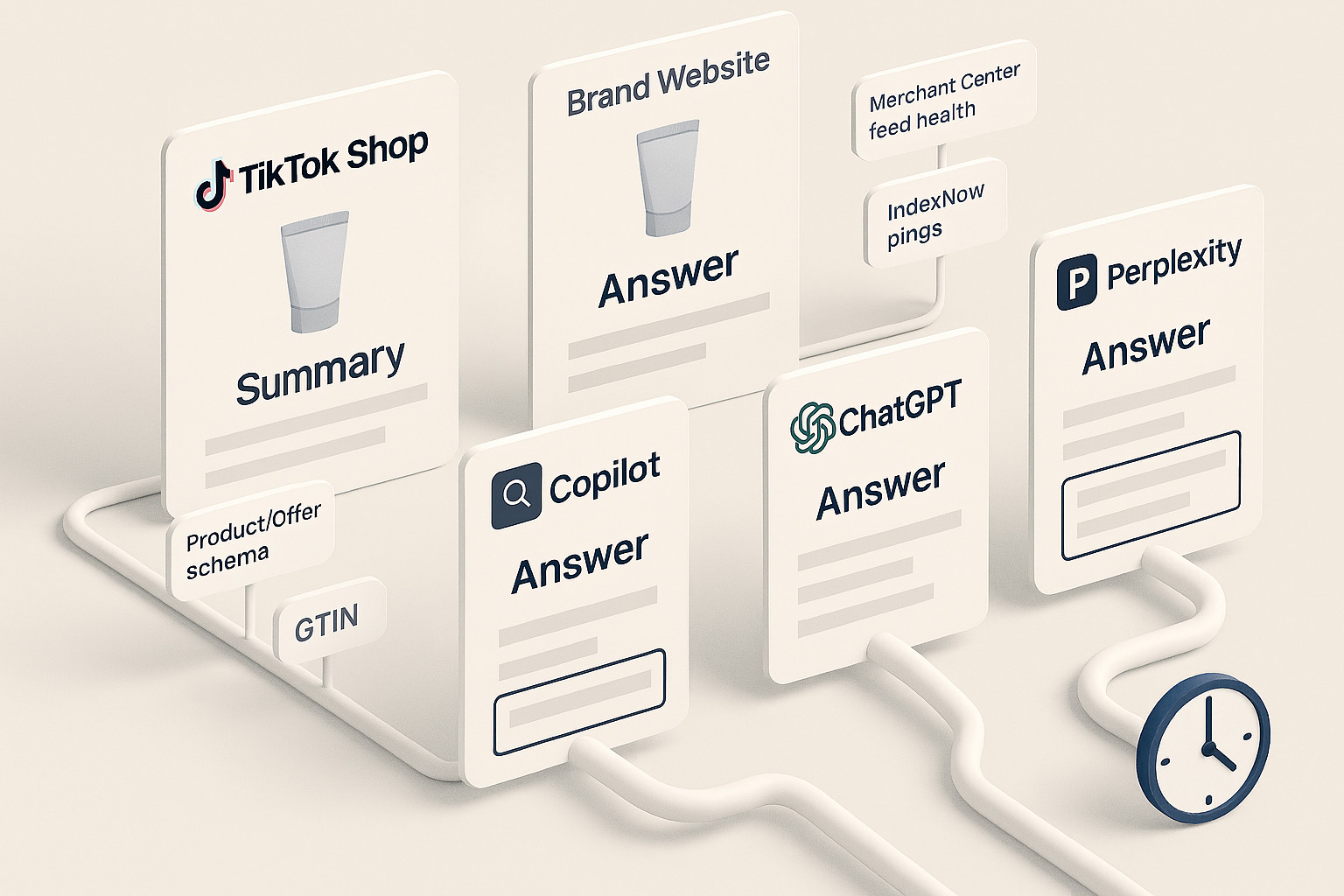
D2C skincare using GTIN, Merchant Center, and micro-answers to earn citations. Image create with Microsoft Copilot.
TikTok Shop is one of 2025’s most searched and fastest‑moving commerce channels. Here’s a grounded, non‑hype walkthrough you can mirror without inventing metrics.
Scenario
A mid‑market D2C skincare brand wants to be cited in AI answers for queries like “best niacinamide serum for oily skin,” “vitamin C serum under $30,” and “is [Brand] cruelty‑free?”.
Objectives
Be ingested, selected, and attributed by Google AI, Copilot Search, ChatGPT Search, and Perplexity for those intent clusters.
Actions
- Entity & profiles: Add Organization schema with
sameAs to the brand’s TikTok Shop profile, Wikipedia/Wikidata (where eligible), LinkedIn, and the canonical site. Ensure name/logo consistency across all properties.
- Product facts: On PDPs, include Product/Offer schema with GTIN, ingredients, size, and price; keep prices consistent across your site and TikTok Shop. Use Merchant Center free listings to broaden structured visibility.
- Answerable content: Publish micro‑answers on ingredient safety, layering order, and storage, each with authoritative citations (dermatology associations, standards). Add a concise “TL;DR” block per page.
- Distribution hooks: Repurpose each micro‑answer into short how‑to clips on YouTube/Shorts and a neutral, non‑promotional Q&A thread on community platforms frequently cited by engines.
- Freshness: Trigger IndexNow on publish/update; automate feed refreshes (price/availability). Keep a simple feed‑health dashboard (GTIN errors, disapprovals).
- Measurement: Weekly, test target queries in the four engines; record citation/no citation, which URL, and quoted passage. Track entity queries in Search Console and Merchant Center diagnostics to catch mismatches.
What to watch (early signals)
- Appearance as a cited source for ingredient/how‑to queries in ChatGPT Search and Copilot.
- Reduction of feed errors and stable GTIN validation in Merchant Center.
- Consistent naming/branding across Wikidata, site schema, and TikTok Shop profile.
- Rising branded/entity impressions for definition‑style queries (e.g., “brand + ingredient”).
Compliance note
Avoid health/medical claims. Cite recognized authorities, keep disclaimers clear, and follow Google’s helpful content and spam policies. Align with platform ad/commerce rules before running promotions.
Case study, Copilot+ PCs retailer/e‑commerce (launch & discovery)
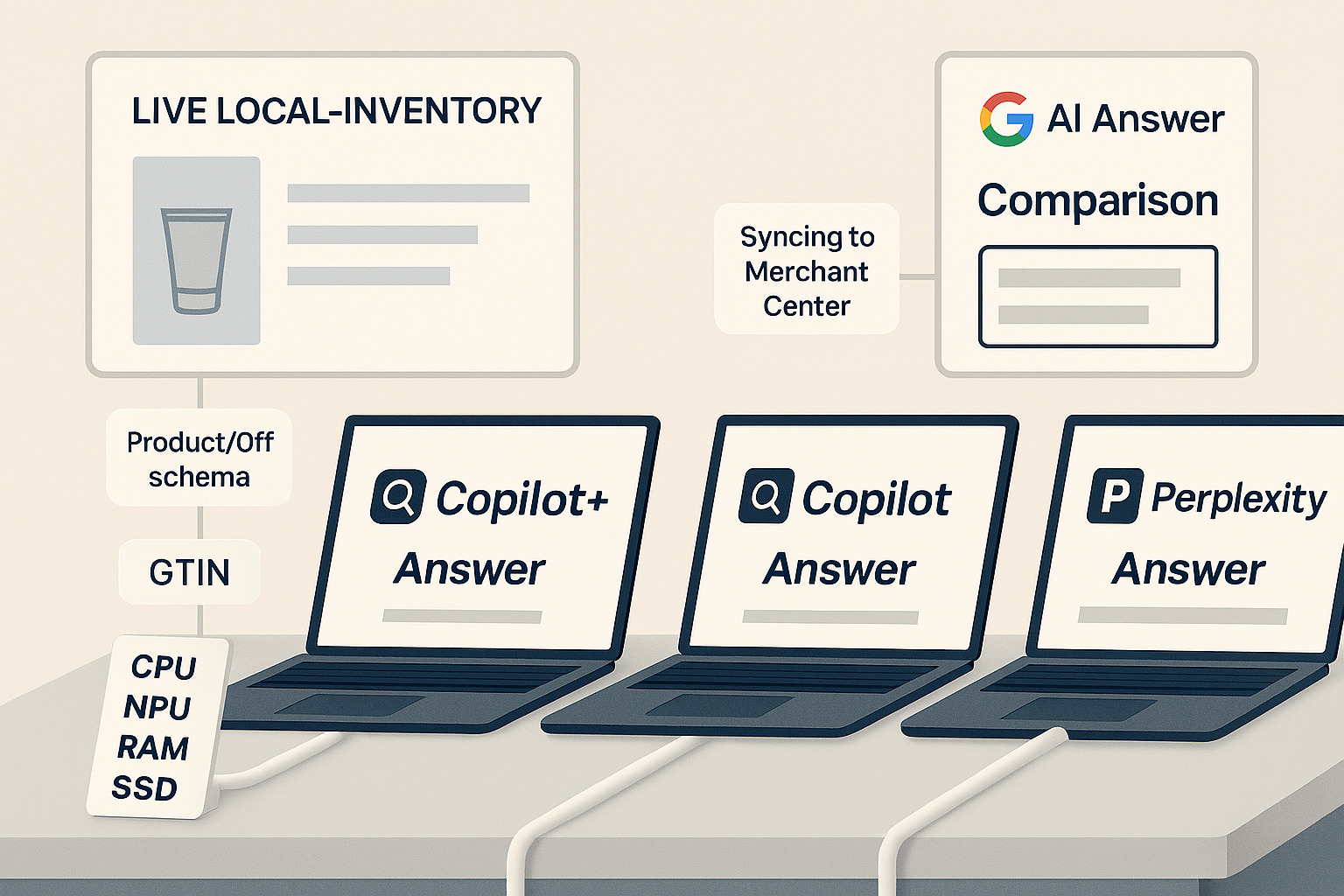
Local feeds and comparison content drive AI citations and store visits. Image create with Microsoft Copilot.
As AI PCs move mainstream, shoppers ask conversational questions like “best Copilot+ PC for college,” “battery life vs price,” or “where to buy near me.” This playbook helps a regional electronics retailer get cited in AI answers while driving in‑store and online conversions.
Scenario
A multi‑store retailer (and online shop) launches a Copilot+ PC assortment. They want visibility for comparison and local‑availability queries.
Objectives
Ensure product and local inventory data are ingested; win selection for feature/comparison questions; secure attribution that links to PDPs or store pages.
Actions
- Entity & locations: Use Organization + LocalBusiness markup per store with NAP consistency and
sameAs (Maps, social, Wikipedia/Wikidata where eligible).
- Product data: Ship Product/Offer schema with model name, CPU/GPU family, RAM/SSD ranges, display specs, and GTINs; keep availability accurate (InStock/OutOfStock/PreOrder).
- Local inventory: Sync store‑level availability to Merchant Center (local feeds) and mirror on each store page; add “check stock in your city” widgets that render crawlable signals.
- Answerable content: Publish micro‑answers on buyer intents such as “who should buy a Copilot+ PC?”, “how to pick NPU‑ready laptops,” and “battery life testing methods”, grounded in verifiable references and your test methodology page.
- Distribution hooks: Post short comparison videos and a neutral Q&A thread addressing common objections (ports, compatibility, pricing tiers).
- Freshness: Automate IndexNow on price/stock changes; schedule feed refreshes multiple times daily during launch windows.
- Measurement: Track citations for “best for X use,” “compare [chipset],” and “near me” terms across Google AI, Copilot, ChatGPT Search, and Perplexity; correlate with local inventory clicks and store‑level calls.
What to watch (early signals)
- Appearance in AI answers for comparison queries with a link to your PDP.
- Declining discrepancies between store pages and Merchant Center local availability.
- Rising impressions on “[city] + Copilot+ PC” and “in stock near me.”
Compliance note
Avoid unverifiable benchmarks; cite standardized test methods and manufacturer documentation. Keep price claims synchronized across ads, feeds, and PDPs.
Case study, B2B SaaS (AI sales co‑pilot) mid‑market
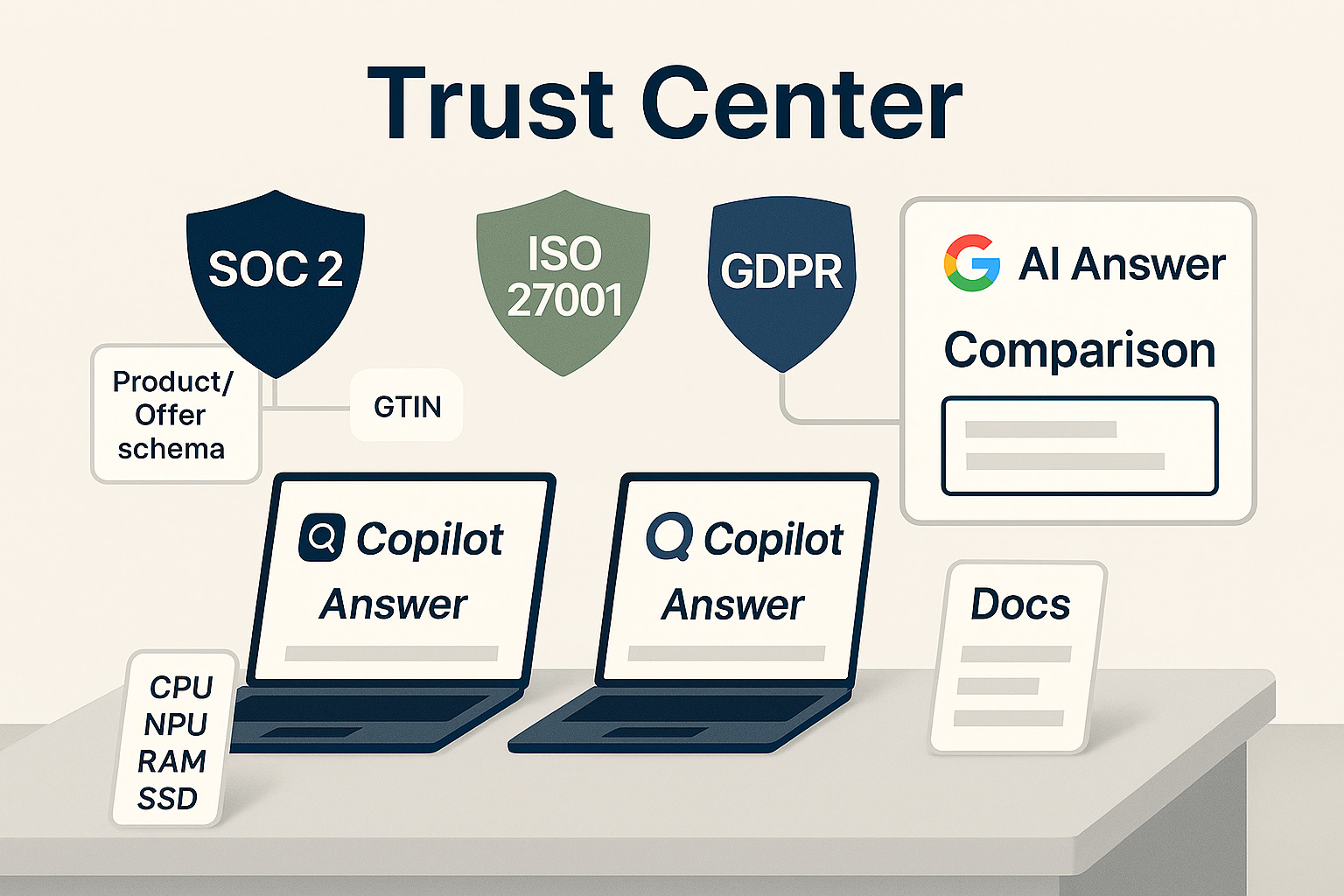
Compliance-first documentation becomes the safest source to cite. Image create with Microsoft Copilot.
In B2B, trust and compliance decide whether AI engines will confidently cite you. This playbook centers on security proofs, integration clarity, and answerable docs.
Scenario
A mid‑market SaaS offers an AI sales co‑pilot for CRM users. Targets include “AI sales assistant for HubSpot/Salesforce,” “GDPR‑compliant meeting notes,” and “SOC 2 Type II sales AI.”
Objectives
Be the safest, clearest source for compliance, integration, and pricing questions; earn citations to docs and solution pages.
Actions
- Entity & product: Add Organization + SoftwareApplication/Product schema, with pricing
Offer ranges and sameAs to marketplace listings (AppExchange/HubSpot Marketplace) and LinkedIn.
- Trust center: Publish a crawlable Trust Center with SOC 2/ISO statements, data residency, subprocessors, and retention policy; version‑stamp updates.
- Answerable docs: Create micro‑answers for “what data is processed,” “fields excluded,” “PII handling,” “audit logging,” and “SAML/SCIM setup” with links to official standards.
- Integration clarity: Dedicated pages per CRM with scopes/permissions tables and rate‑limit notes; include OpenAPI/SDK references that models can parse.
- Distribution hooks: Contribute neutral guidance on community forums (e.g., vendor‑agnostic threads) with citations back to standards rather than sales pages.
- Measurement: Weekly logging of citations for “[CRM] + AI assistant,” “GDPR/SOC2 + meeting notes,” and “pricing” across engines; monitor branded entity queries and doc page dwell.
What to watch (early signals)
- AI answers citing your Trust Center or docs for compliance queries.
- Marketplace profile views and trials originating from “documentation” landing pages.
- Increased appearances for “how to integrate with [CRM]” showing your doc URL.
Compliance note
Avoid blanket guarantees; state controls precisely and reference recognized standards. Keep privacy and security claims in lockstep with legal.
Case study, Smart‑home security cameras & doorbells (D2C + marketplace)
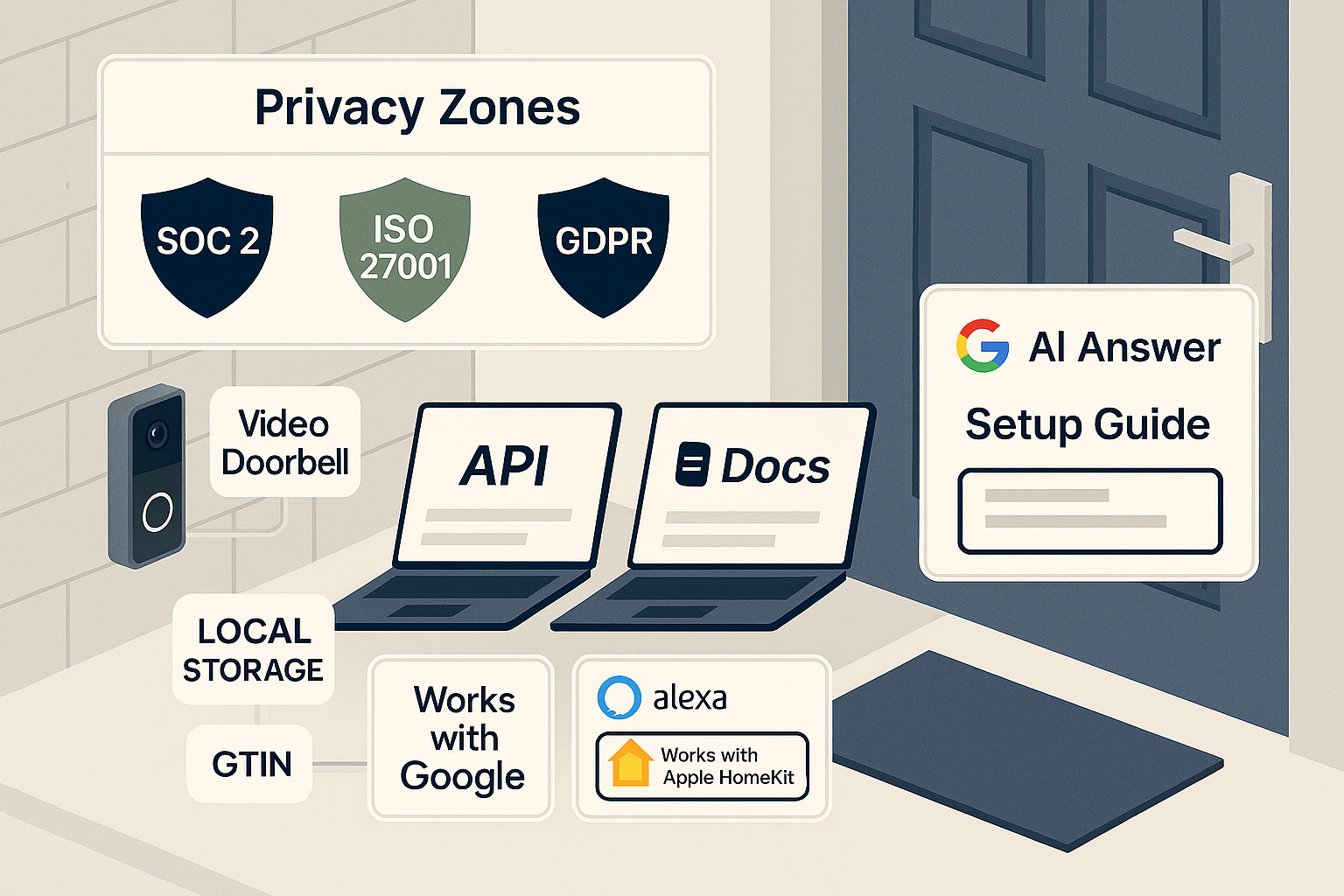
Clear setup and compatibility data guide AI answers and reduce support. Image create with Microsoft Copilot.
Smart‑home security remains a top consumer search category, with questions shifting from megapixels to privacy, subscriptions, and ecosystem compatibility. This playbook balances trustworthy product facts with clear setup guidance that AIs can quote safely.
Scenario
A D2C brand sells Wi‑Fi cameras and video doorbells via its own store and major marketplaces. Targets include “best budget doorbell camera,” “no‑subscription security camera,” “privacy zones doorbell,” and “works with [Google/Alexa/HomeKit].”
Objectives
Get ingested with clean identifiers and compatibility data; win selection for setup/how‑to and comparison queries; earn attribution to PDPs and how‑to docs.
Actions
- Entity & compatibility: Use Organization + Product/Offer schema with GTIN, model numbers, and
additionalProperty for Works with details (e.g., Google Home, Alexa, HomeKit). Link accessories via isAccessoryOrSparePartFor (e.g., chimes, solar panels).
- How‑to content: Publish micro‑answers on privacy zones, local storage vs cloud, RTSP, HDR night vision, and battery life factors; add a short “TL;DR setup” checklist per device.
- Media proofs: Host concise install and troubleshooting videos; include transcript/chapters so engines extract accurate steps.
- Local install network: If you offer installation, create LocalBusiness pages per city with service areas and NAP consistency; add a “book installer” CTA.
- Freshness: Wire IndexNow on firmware notes, compatibility updates, and stock changes; keep PDP specs synchronized with marketplace listings.
- Measurement: Track citations for “no subscription,” “privacy zones,” and “[ecosystem] compatible” queries across engines; monitor returns/support tickets as qualitative signal of clarity.
What to watch (early signals)
- AI answers citing your setup or privacy pages.
- Increased clicks on installer locators and reduction in repeat support contacts for the same topics.
- Stable compatibility mentions (Google/Alexa/HomeKit) across your site, schema, and marketplaces.
Compliance note
Avoid unverifiable claims about detection accuracy. Disclose data flows, retention, and end‑to‑end encryption status. Remind users to comply with local recording and signage laws.
Team workflow you can start this week (fast, durable, measurable)
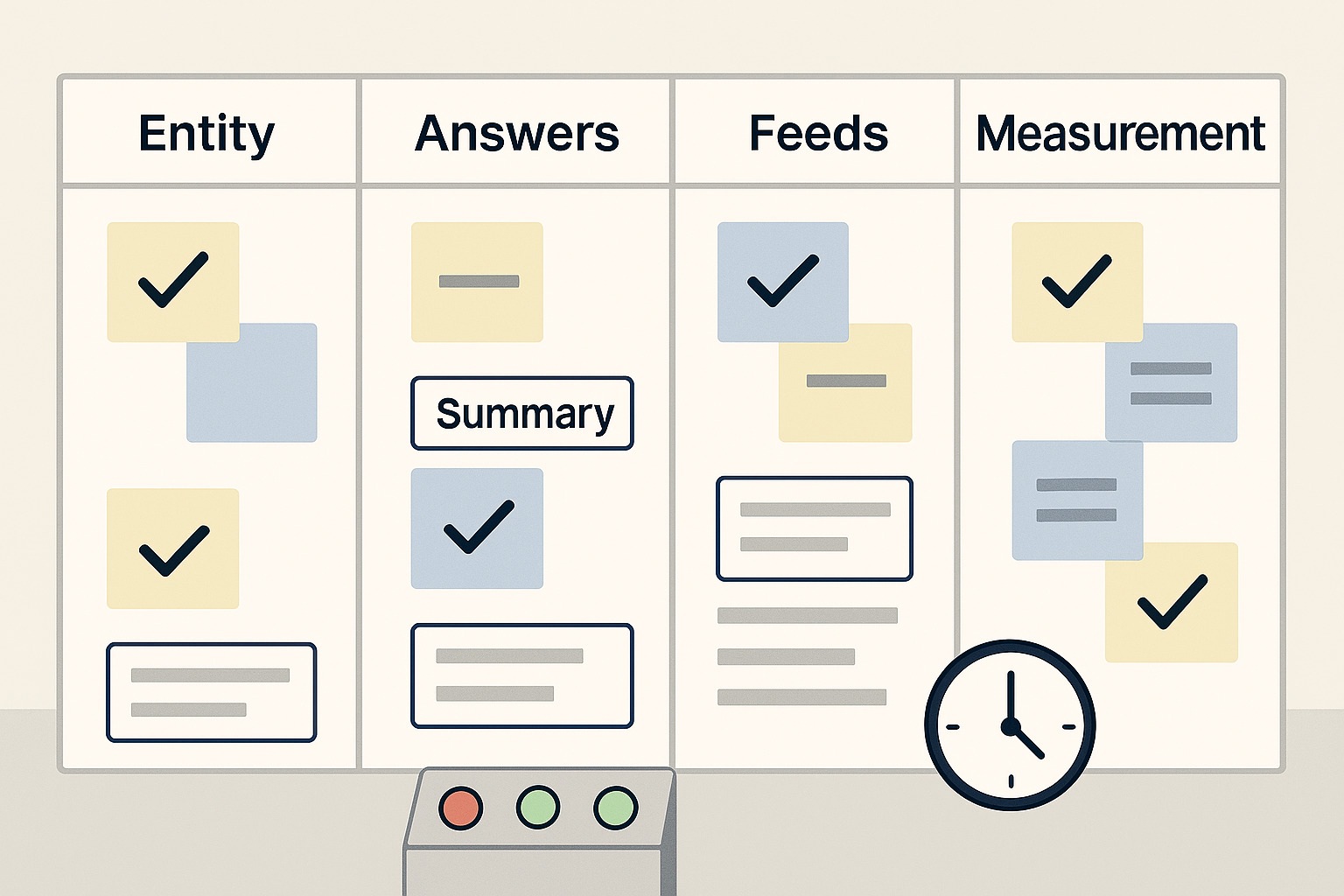
A lightweight sprint loop to ship, measure, and improve. Image create with Microsoft Copilot.
To ship quickly without sacrificing quality, run these sprints in order and repeat the loop.
- Entity & schema sprint (2–3 days): Ship Organization schema with “; add Product schema with GTINs; validate in Rich Results tests; resubmit key URLs. (Keywords: schema markup,
sameAs.)
- Answerable content sprint (1 week): Redesign your top 10 pages into micro‑answers (definition → evidence → steps); add 3–5 authoritative citations per page. (Keywords: micro‑answers, AEO.)
- Feed & freshness sprint (ongoing): Enable Merchant Center free listings; use supplemental feeds; wire IndexNow notifications after publish. (Keywords: Merchant Center, IndexNow.)
- Measurement loop (weekly): Run the four‑engine checks, record passage‑level wins/losses, and iterate content blocks, not just keywords. (Keywords: GEO, measurement.)
If you remember just one habit
Treat every critical page like a well‑cited scene in a documentary, tight, verifiable, and unambiguous. In a world where AI assembles answers on the fly, brands that own their entities, structure their facts, and feed fresh data become the obvious sources engines choose and cite. If this sparked ideas or doubts, drop a question or share your experience in the comments, I’ll read and respond so we can refine these playbooks together. (Keywords: brand visibility, AEO, GEO.)
Sources & Footnotes
- Google, Expanding AI Overviews and introducing AI Mode (Mar 5, 2025)
- Google, AI in Search: Going beyond information to intelligence (May 20, 2025)
- Google, AI Overviews expansion at I/O (May 2025)
- Microsoft, Introducing Copilot Search in Bing (Apr 4, 2025)
- OpenAI, Introducing ChatGPT Search (updates Feb 5, 2025)
- Google Developers, Creating helpful, reliable, people‑first content
- Google Developers, Spam Policies for Google Web Search (incl. scaled content abuse, site‑reputation abuse)
- Google Developers, Organization structured data
- Google Developers, Intro to structured data
- Google Developers, Changes to HowTo and FAQ rich results (Aug 2023)
- Google Developers, FAQPage feature availability
- Google Support, Merchant Center: Product data specification (updated 2025)
- Google Support, GTIN requirements
- GS1, GS1 Digital Link overview
- GS1, Digital Link URI Syntax, Release 1.6 (Mar 2025)
- IndexNow, Protocol documentation
- OpenAI, Overview of OpenAI crawlers (GPTBot & controls)
- Google Developers, robots.txt introduction & guidance
- Perplexity, How does Perplexity work? Help Center
- KDD 2024, GEO: Generative Engine Optimization (paper)
- Google, Preferred Sources in Top Stories (Aug 2025)
- TikTok Newsroom, TikTok Shop is where shoppers come to discover (Jun 13, 2025)
- Financial Times (TechAsia), TikTok Shop expansion and Japan launch context (Aug 14, 2025)
- Momentum Works, TikTok Shop doubles global GMV in H1 2025 (Jul 31, 2025)
- Reuters Graphics, TikTok e-commerce growth by category (2025)
